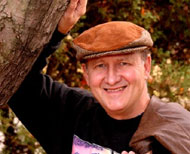Featured Poet

( Havertown, Pennsylvania )

the hand of Adam reaching across
to the bearded figure on the Sistine Chapel ceiling
the hand of Cain after his envy slew his brother
and left his violence in those who came after
hand of Michelangelo lying on the scaffold
spreading his brush on the high plaster
hands of the deaf Beethoven on the keys
playing the lingering Fűr Elise
hands on the fields of Gettysburg erupting
out of the mud after the piercing of the guns
hands pinned on the barbed wire of Europe
after the Marne and Verdun and the Somme
hands, hands, hands, rising out of the air of Dachau
and Auschwitz asking a question of the living
hands of the Florida runaway outstretched
over the slain body of the Kent State student
hands at the Memorial Wall in Washington
tracing names in the order that they left
hands, hands, hands of the missing in Cambodia,
Rwanda, Sudan, and so many hurt placesOne’s desire is to say something worth saying – to reach out over time and extend one’s hand to the reader. My goal here is to produce a verbal montage using scenes of hands as the symbol.
I like the idea of representing passages of time, collages of images cross-connecting. I am intrigued how M.C. Escher expanded this idea in his artwork, cross-connecting the moment through planes of intersecting scenes in an ever evolving flow though the continuum of time. Hands are a useful and emotive symbol for the individual and the universal.
This poem started as an interweaving of various personal scenes using hands as the centering image – the hands of my grandmother sewing a sock or me walking along the boardwalk with a teenage sweetheart or holding a newspaper on the bus. In developing the use of hands within this personal framework, I thought about images of hands within a universal context. Consequently the poem began to branch out.
The poem then developed from two separate perspectives – the image of hands within the personal and the image of hands within the universal (Beethoven’s hands on the keys, Michelangelo lifting his paintbrush, Cain killing his bother, the Kent State Shooting). In the process I felt that the weaving of the personal and the universal seemed to diminish the personal because of the more powerful images of the universal. The historical took precedence over the personal. The poem as it stands now is an historical montage of hands. The personal segment of this poem is still to be completed.
In my poem “Doors,” which will appear in the next issue of the Blue Fifth Review, the use of doors represents a personal passageway sort of Escher-like collage through time. Admittedly, “Doors” is very different from “Montage of Hands,” yet the connection is Escher who is a model for intersplicing time.
I should mention that I was much influenced by the scenes of boots at the Holocaust Museum in Washington DC. The scenes of those boots sticks with me. I should add that the scenes of hands in “Montage of Hands” sticks with me too, which is why I wrote the poem. I am drawn to the idea of an historical consciousness.
Next - Doug Beasley
Contents
Contributors
Current Issue - Spring Supplement 2006
Home